Scientific classification
Kingdom:
Phylum:
Chordata
Class:
Actinopterygii
Order:
Syngnathiformes
Family:
Centriscidae
Genus:
Macroramphosus
Species:
M. Scolopax
Binomial name (link Wikipedia)




Snipe Fish
Poisson Bécasse
Schnepenfisch
Trompetero
Snipvis
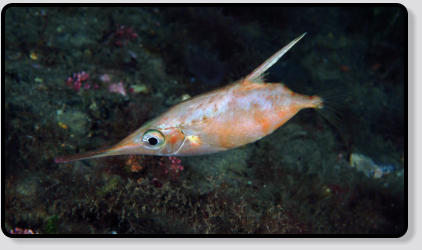
Description
Length: up to 20 cm.
Habitat: pelagic.
The longspine snipefish, bellowfish, common bellowsfish, snipe-fish, snipefish, spine trumpet fish, or trumpetfish, Macroramphosus scolopax, is a
snipefish of the genus Macroramphosus. It is also known as the slender snipefish off the South African coast.
This fish is found worldwide in tropical to subtropical water in the Atlantic, Indian, and west Pacific Oceans, at depths of 25 to 600 m (82 to 1,969
ft)
Longspine snipefish are reddish pink dorsally but have silvery bellies. They have a large eye, long snouts and a slender spine protruding dorsally.

Animalia
Scientific classification
Kingdom:
Phylum:
Chordata
Class:
Actinopterygii
Order:
Gasterosteiforme
s
Family:
Syngnathidae
Genus:
Hippocampus
Species:
H. Hippocampus
Binomial name (link Wikipedia)




Sea-Horse
Hippocampe
Seepferdchen
Caballito De Mar
Kortsnuitzeepaardje
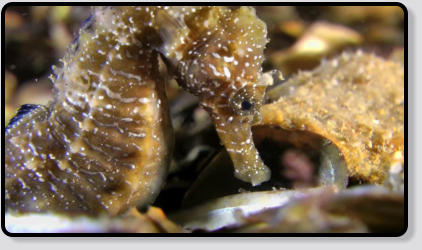
Description
Length: up to 7 cm.
Habitat: seaweed bottoms and sea grass meadows.
The short-snouted seahorse (Hippocampus hippocampus) is a species of seahorse in the family Syngnathidae. It is endemic to the
Mediterranean Sea and parts of the North Atlantic, particularly around Italy and the Canary Islands. Colonies of the species have recently been
discovered in the River Thames around London and Southend-on-Sea.
Their preferred habitat is shallow muddy waters, estuaries or seagrass beds.
In the United Kingdom they are protected under the Wildlife and Countryside Act 1981. In 2010, the London Zoo, which operates short-snouted
seahorse breeding programme, saw the birth of 918 baby seahorses.
Animalia
Scientific classification
Kingdom:
Phylum:
Chordata
Class:
Actinopterygii
Order:
Atheriniformes
Family:
Atherinidae
Genus:
Atherina
Species:
A. Presbyter
Binomial name (link Wikipedia)




Sand Melt
Prêtre
Atlantik-Ährenfisch
Guelde
Koornaarvis
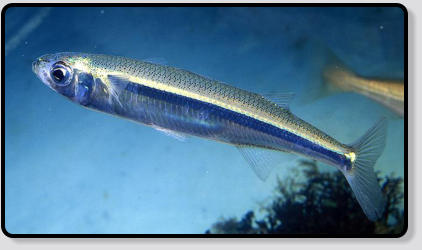
Description
Length: up to 10 cm.
Habitat: coastal pelagic.
The sand smelt (Atherina presbyter) is a species of marine fish of the Atherinidae family, common in the north-eastern Atlantic from the Danish
straits to the Canary Islands and the western Mediterranean Sea. They live in shoals near the water surface, but go deep in winter.
Animalia
Scientific classification
Kingdom:
Phylum:
Chordata
Class:
Actinopterygii
Order:
Clupeiformes
Family:
Clupeidae
Genus:
Sardina
Species:
S. Pilchardus
Binomial name (link Wikipedia)




European Pilchard
Sardine
Sardine
Sardina
Europese Sardine
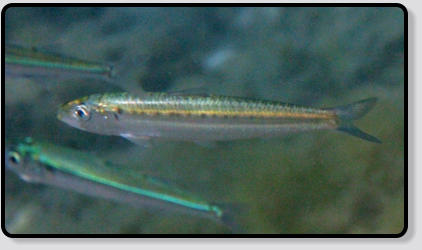
Length: up to 25 cm.
Habitat: coastal pelagic.
European pilchard (Sardina pilchardus) is a species of ray-finned fish in the monotypic genus Sardina. Littoral species. Forms schools, usually at
depths of 25 to 55 or even 100 m by day, rising to 10 to 35 m at night. Feeds mainly on planktonic crustaceans, also on larger organisms.
Spawns in batches, in the open sea or near the coast, producing 50,000-60,000 eggs with a mean diameter of 1.5 mm.
Description
Animalia
Scientific classification
Kingdom:
Phylum:
Chordata
Class:
Actinopterygii
Order:
Mugiliformes
Family:
Mugilidae
Genus:
Chelon
Species:
C. Aurata
Binomial name (link Wikipedia)




Grey Mullets
Mulet
Kastenmaul-Meeräsche
Lisas
Goudharder
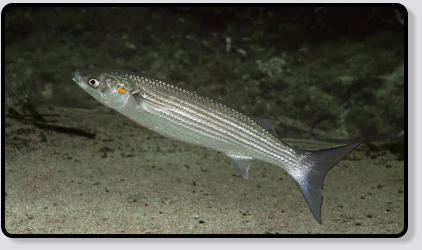
Length: some species up to 80 cm.
Habitat: shallow waters; also in shallow waters of harbours.
The Golden grey mullet (Chelon aurata) is a fish in the family Mugilidae. It has hydrodynamic, very elegant elongated, more or less cylindrical
body, with strong tail-fin. It has dark gray back that transit into silver white toward the belly with several grey horizontal stripes. Golden spot is
present in gill covers. Its maximum length is around 60 cm and weight around 1.5 kg, but commonly it is much smaller fish with average
specimen having 30 cm in length. Reproduction takes place in the sea, from July to November.
It is present in Eastern Atlantic from Scotland to Cape Verde, in the Mediterranean and Black Sea and in coastal waters from southern Norway
and Sweden (but not Baltic) to Morocco. It is rare off coasts of Mauritania. It has been introduced into the Azov and Caspian Seas.
Golden grey mullet is a pelagic species, usually inshore, entering lagoons, ports and estuaries, but rarely moves into freshwater. It feeds on small
benthic organisms, detritus and occasionally insects and plankton.
It ranges from shallows to depths of about 20m, but it is most common between 1 - 10m. It prefers sandy bottoms covered with various
vegetation and smaller rocks where it can find its food and protection from predators like larger Eels, European Seabass, Common Dentex and
similar predatory species.
Description
Animalia
Scientific classification
Kingdom:
Phylum:
Chordata
Class:
Actinopterygii
Order:
Perciformes
Family:
Carangidae
Genus:
Naucrates
Species:
N. Ductor
Binomial name (link Wikipedia)




Pilotfish
Poisson Pilote
Pilotmakrele
Pez Pilote
Loodsmannetje
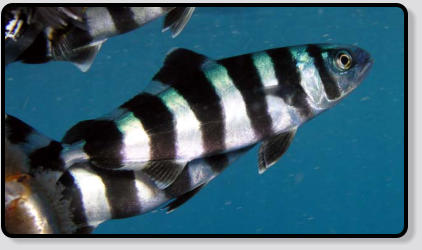
Length: up to 35 cm.
Habitat: pelagic.
The pilot fish congregates around sharks, rays, and sea turtles, where it eats ectoparasites on, and leftovers around the host species; younger
pilot fish are usually associated with jellyfish and drifting seaweeds.They are also known to follow ships, sometimes for long distances; one was
found in County Cork, Ireland, and many pilot fish have been sighted on the shores of England. Their fondness for ships led the ancients to
believe that they would navigate a ship to its desired course.
The pilot fish's color is between dark blue and blackish-silver, with the belly being lighter in color. The pilot fish is also known to have a temporary
variation of color when excited; its dark-colored bars disappear, and its body turns silvery-white, with three broad blue patches on its back. It can
be recognized by its five to seven distinctive traverse bands, which are of a much darker color than the rest of the body. The pilot fish can grow
up to 60–70 cm in length. The pilot fish is edible and is said to taste good, but it is rarely available due to its erratic behavior when caught.
Pilot fish swimming with an oceanic whitetip shark
While pilot fish can be seen with all manner of sharks, they prefer accompanying the oceanic whitetip, Carcharhinus longimanus. The pilot fish's
relationship with sharks is a mutualist one; the pilot fish gains protection from predators, while the shark gains freedom from parasites.
Description
Animalia





Harry van Goor 2016
source: Wikipedia, the free encyclopedia


Categories: small fish species
Scientific classification
Kingdom:
Phylum:
Chordata
Class:
Actinopterygii
Order:
Perciformes
Family:
Centrolophidae
Genus:
Schedophilus
Species:
S. Ovalis
Binomial name (link Wikipedia)




Imperial Blackfish
Rouffe Impériale
Driftfisch
Pámpanos
Zwartvis
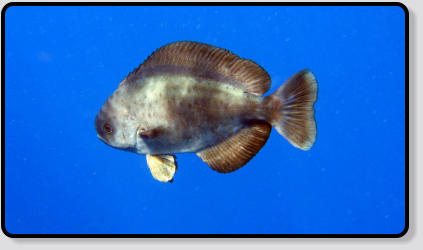
Length: average size 20 cm.
Habitat: pelagic.
The imperial blackfish, Schedophilus ovalis, is a medusafish of the family Centrolophidae found in the eastern Atlantic and the Mediterranean
Sea, at depths of between 70 and 700 m. Its length is up to 100 cm.
No further information available on Wikipedia.
Description
Animalia

Scientific classification
Kingdom:
Phylum:
Chordata
Class:
Actinopterygii
Order:
Zeiformes
Family:
Zeidae
Genus:
Zeus
Species:
Z. Faber
Binomial name (link Wikipedia)




John Dory
Saint Pierre
Heringskönig
Pez De San Pedro
Zonnevis
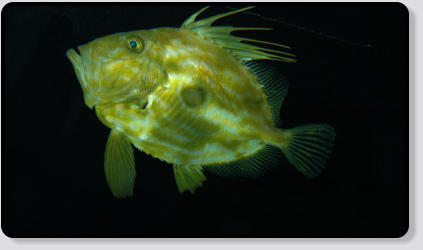
Length: up to 70 cm.
Habitat: rocky and sandy bottoms. Generally below a depth of 100 metre.
John Dory, St Pierre or Peter's Fish, refers to fish of the genus Zeus, especially Zeus faber, of widespread distribution. It is an edible benthic
coastal marine fish with a laterally compressed olive-yellow body which has a large dark spot, and long spines on the dorsal fin. The dark spot is
used to flash an 'evil eye' if danger approaches. Its large eyes at the front of the head provide it with binocular vision and depth perception, which
are important for predators. The John Dory’s eye spot on the side of its body also confuses prey, which are scooped up in its big mouth.
The John Dory catches its prey by stalking it, then extending its jaw forward in a tube like structure to suck the fish in with some water. The water
then flows out through the gills; the pre-maxillary bone, the only tooth-bearing bone in this fish, is used to grind the food. The John Dory is
primarily a piscivore; it eats a variety of fish, especially schooling fish such as sardines. Occasionally it eats squid and cuttlefish.
Their predators are sharks, such the dusky shark, and large bony fish.
Description
Animalia

Scientific classification
Kingdom:
Phylum:
Chordata
Class:
Actinopterygii
Order:
Lophiiformes
Family:
Antennariidae
Genus:
Antennatus
Species:
A. Nummifer
Binomial name (link Wikipedia)




Spotfin Frogfish
Poisson Grenouille
Rückenfleck-Anglerfisch
Pez Rana
Gele/ oranje Voelsprietvis
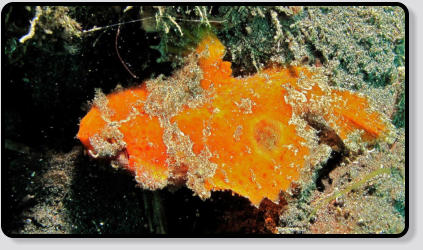
Length: up to 15 cm.
Habitat: rocky bottoms.
The spotfin frogfish, Antennatus nummifer, is a fish of the family Antennariidae, found in all subtropical oceans to depths of 300 m. It grows to 13
cm (5.1 in) in total length. This species can be found in the aquarium trade.
The species varies in color to match their surroundings. They are known for their ability to camouflage and get lost in their surroundings to avoid
predators. They are able to lure in their prey with a stalk found between their eyes that imitates the movements of their prey; its mouth can be
opened and expanded to the same width as its body to catch and swallow prey. They feed on small fish, crustaceans, and worms.
The spotfin frogfish can be found on sheltered reefs and on sandy bottoms with rich sponge growth along them. They are widespread across the
Indo-Pacific region.
Description
Animalia

Scientific classification
Kingdom:
Phylum:
Chordata
Class:
Actinopterygii
Order:
Gadiformes
Family:
Phycidae
Genus:
Phycis
Species:
P. Phycis
Binomial name (link Wikipedia)




Lesser Forkbeard
Mostelle
Dunkles Gabeldorsch
Brota
Gaffelkabeljauw
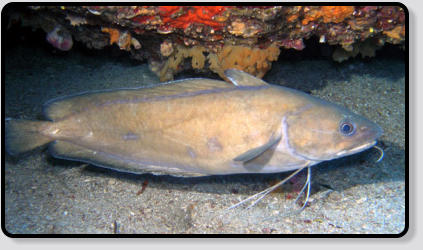
Length: up to 60 cm.
Habitat: rocky bottoms, in caves.
Phycis phycis commonly can reach a length of 25 centimetres (9.8 in), with a maximum length of 65 centimetres (26 in) in males.
These fishes have a wide mouth with thick lips. A barbel is present on the chin. They do not have any thorn in the fins, but show elongated pelvic-
fin rays reduced to bifid filaments, with 2 soft rays. The dorsal fin is a double and rounded (the first can have 9 or 11 soft rays, the second 56 or
65). The caudal fin is rounded, with 27 or 29 soft rays. Vertical fins distally reaching the origin of the anal fin. The are dark, sometimes with a pale
margin. Body color is dark brown or gray on the back , but ventrally the color becomes paler.
This species is present in the western Mediterranean, in Portugal and in western coast of northern Africa and the Azores.
These fishes live on hard and sandy-muddy bottoms close to the rocks usually, at depths of 100-650 m.
Description
Animalia










